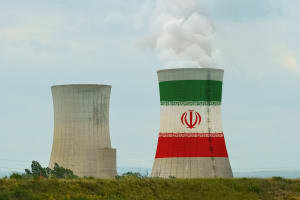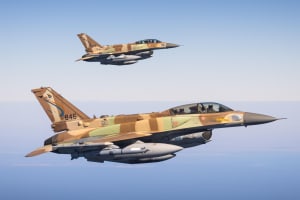IDF has neutralized 70% of Hezbollah’s drones

Israel Defense Forces announced on Thursday that it has destroyed approximately 70% of Hezbollah Unit 127’s prewar drone inventory, primarily during the IDF’s military offensive campaign, which began in mid-September.
The Israeli military estimates it has eliminated at least 10% of Hezbollah’s drone operators, including the drone commander of the North Litani region in Lebanon. In addition, the IDF has reportedly destroyed some 54 Hezbollah military posts that contained drones.
The IDF has also dismantled 24 operational detection installations linked to the terrorist group’s drone units and destroyed six Hezbollah underground drone bases, eight drone assembly centers, and seven drone storage facilities. A large portion of Hezbollah’s vast rocket and missile arsenal has been struck by Israeli forces as well.
In late October, Israeli Defense Minister Yoav Gallant estimated that the Iranian-backed terrorist group has only retained about 20% of its prewar rocket arsenal. He noted that the group's remaining capabilities were disorganized, limiting their ability to launch significant volleys.
“The achievements of the IDF in Lebanon are extremely impressive. We have eliminated the chain of command and control of Hezbollah, and I estimate the missile and rocket capability they have left is at 20%,” Gallant assessed.
However, because Hezbollah was believed to possess around 150,000 rockets and missiles before the Oct. 7 attack last year, Gallant's estimate suggests the group still has tens of thousands of rockets in its arsenal. Israel’s advanced multilayered aerial defense system has been largely effective in neutralizing the rocket and missile threat from Iran and its terrorist proxies, including Hamas in Gaza and the Houthis in Yemen.
The Israeli military has a lower interception rate for drones compared to rockets. The drone shoot-down rate is around 80%, while the interception rate for rockets and missiles reaches approximately 90%. The IDF noted that 231 of 1,300 enemy drones were not intercepted. Drones are reportedly more difficult to shoot down due to their slower speeds and lower flight altitudes. In addition, Israel's aerial defense systems often mistake drones for birds, as they tend to fly at similar altitudes.
Drones launched into Israeli territory have consequently killed and wounded a number of Israeli soldiers and civilians.
In October, the Defense Ministry announced that defense industry experts were tasked with developing an effective response to the growing drone threat.
“The UAV threat is a multi-arena threat originating from Iran, which supplies UAVs to Lebanon, Yemen and Iraq, and even launches them itself,” Gallant stated. He said the "competition, in which small and large defense industries presented various solutions, from the most sophisticated to simple ones, advances us another step forward."
“Countering the UAV threat is a critical national priority,” Defense Ministry Director Maj.-Gen. (res.) Eyal Zamir stated. "Our objective is to expedite the development and deployment of new interception systems. These will constitute a more comprehensive defensive strategy with the laser system and other technologies we're advancing.”

The All Israel News Staff is a team of journalists in Israel.














